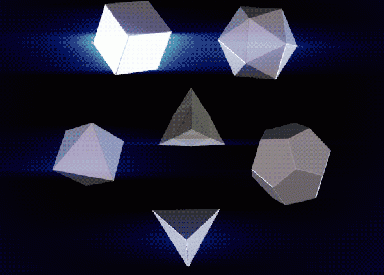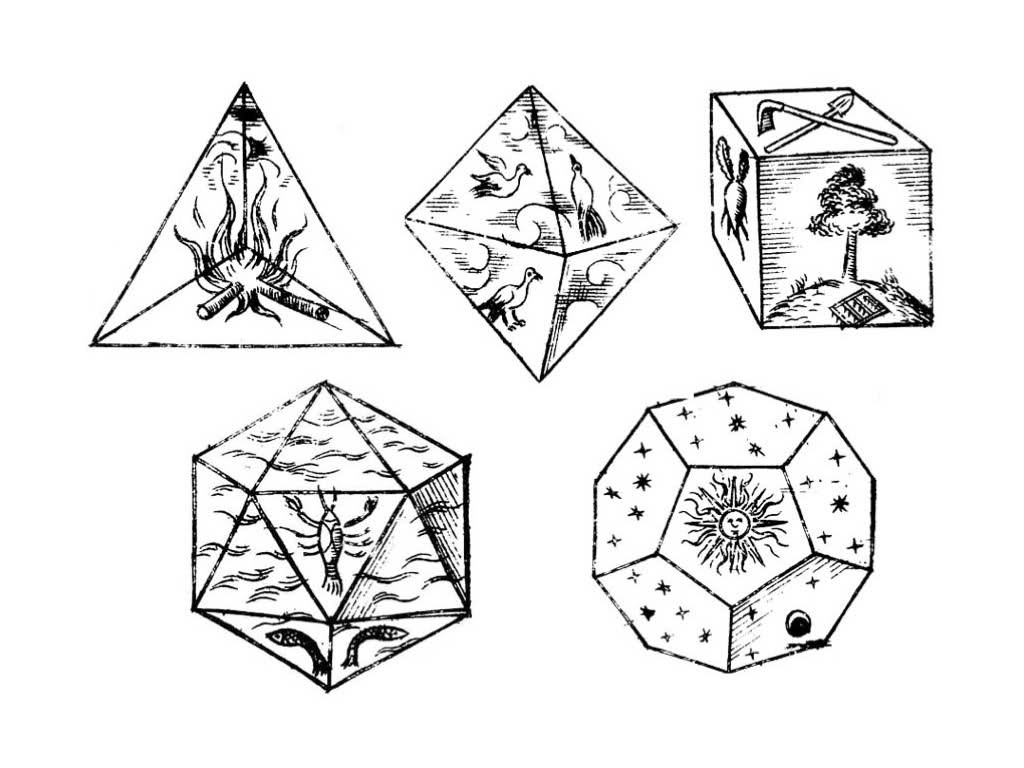
The term ?sacred geometry? is used by archeologists, anthropologists and geometers to encompass the religious, philosophical and spiritual beliefs that have arisen around geometry in various cultures throughout human history. Sacred geometry involves sacred universal patterns used in the projection of everything in our reality, most often seen in architecture and sacred art. The basic belief is that geometry and mathematical and harmonic proportions are also found in music and cosmology. This value system was seen as widespread even in prehistory, representing a universal culture of the human condition.
During the first appearance of human civilization, we observed the presence and importance of geometry. It is clearly evident that ancient cultures (Celts, Druids, Egyptians, Knights Templar) and Aboriginal peoples (Maya, Hopi) were very aware of these geometric signatures and numerical frequencies.
That is why geometry was understood and used by the ancient master builders, who, working at the beginning of civilization, about four millennia ago, attributed to the world such masterpieces as the megalithic structures of ancient Europe, the pyramids and the temples of Pharaonic Egypt and the stepped ziggurats of Sumeria. This geometry has continued to be used over the centuries from the earliest times until historically recent times.
Platonic Solids
Platonic solids are forms that are part of sacred geometry. They were first cataloged by the philosopher Plato (427?347AC), who wrote about these solids in his treatise the Timaeus. However, there is evidence of these forms that were found around the world around 1,000 years before Plato?s documentation.
The Greeks taught that these five solids were the main patterns of physical creation. Four of the solids were seen as the archetypal patterns behind the four elements (earth, air, fire and water), while the fifth was considered to be the pattern behind the life force itself, the ether or the universe.
In Plato?s ?Harmony of Spheres? theory, he shared his belief that the secrets of the universe are mathematical and their numbers, in which he imagined how the five ?perfect solids? are represented by imaginary spheres, each placed inside the other. He proposed that the distances from the planets to the sun have proportions similar to each other like the spheres that surround each solid.
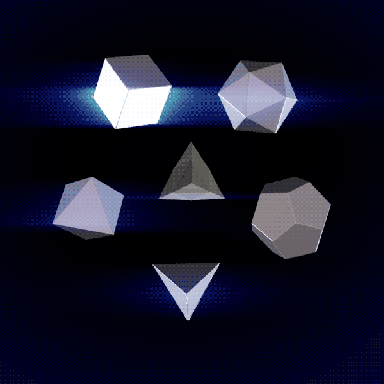
The Pythagoreans thought that the celestial bodies were separated from each other by intervals corresponding to the harmonic lengths of the strings, and therefore they supported the idea that the movement of the spheres gives rise to a musical sound called ?Harmony of the Spheres?. Modern science has shown that planets have unique ?vibrations?, or ?sounds? that support Plato?s conjecture.
There are five platonic solids and they are composed of ?five regular convex polyheiras?: hexahedron (cube-6 faces), octahedron (double inverted pyramid- 8 faces), tetrahedron (pyramid-4 faces), Icosoedron (20 faces) and dodecahedron (12 faces). The names are derived from the number of sides that each shape has: 4, 6, 8, 12 and 20, respectively.
These shapes predominated in the hundreds of sculpted prehistoric petrospheres found in Scotland, dated more than a thousand years before Plato?s conjecture. These forms are now understood to be closely related to the proton and neutron arrangements in the elements of the periodic table.
The 5 platonic solids are ideal, primary models of crystalline patterns that occur in the world of minerals in countless variations. These are the only five regular polyhedra, that is, the only five solids made from the same equilateral and equiangular polygons.
The Golden Ratio ? The Divine Scale
The golden ratio describes the special relationship found in nature between two parts of a whole. It can be described in terms of number, length, area, volume and, to some extent, in terms of beauty and awareness. We are a microcosmic reflection of the macrocosm. The structure of the human body is based on the same set of principles that are found to work at all levels of creation. Our body contains within it all the information of the universe holographically.
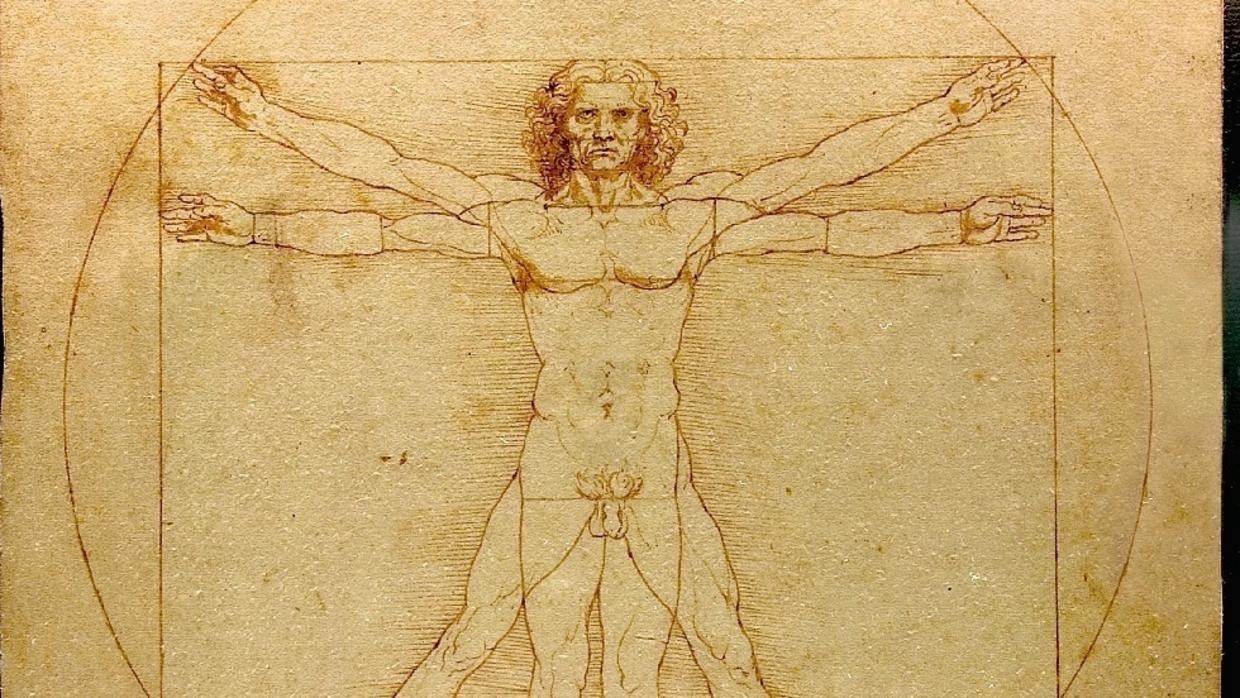
The forms that form the original five Platonic solids occur naturally in nature and, indeed, in the crystalline world. It is believed that working with them individually can help us in our connection with nature and the higher realms of the cosmos; to find the common pattern that binds us together both at the molecular and spiritual levels.
Initiation to Understanding
? The world is made up of waves and sacred proportions. ? Geometry produces symmetry. The waves organize and store memory through the aurea proportion ? the secret of the universe and the most precise pure scientific principle to describe how things relate and work, evolve, change and manifest. ? The waves automatically align with the sacred geometry creating the life force. ? The universe is fractal. ? The entrance of perception is to unite holographically all life processes ? past, present and future.
Tetrahedron

The Tetrahedron, also called the triangular pyramid, contains 4 faces, 4 vertices and 6 edges. Each face is triangular. The tetrahedron represents the element of fire and is connected to the solar plexus chakra, the center of personal power and acceptance. The tetrahedron creates the natural balance between the physical and the spiritual and symbolizes stability, since all its sides are flat.
Cube or Hexahedron

Hexahedron (also called a cube) is the second of the five Platonic solids. The hexahedron has 6 square faces, 8 vertices and 12 edges. The hexahedron is associated with the earth element and corresponds to the root chakra. Meditating with this form helps to maintain focus, remove tension and lessen physical stresses. The cube helps reconnect the energies with those coming from the land and nature.
Octahedron
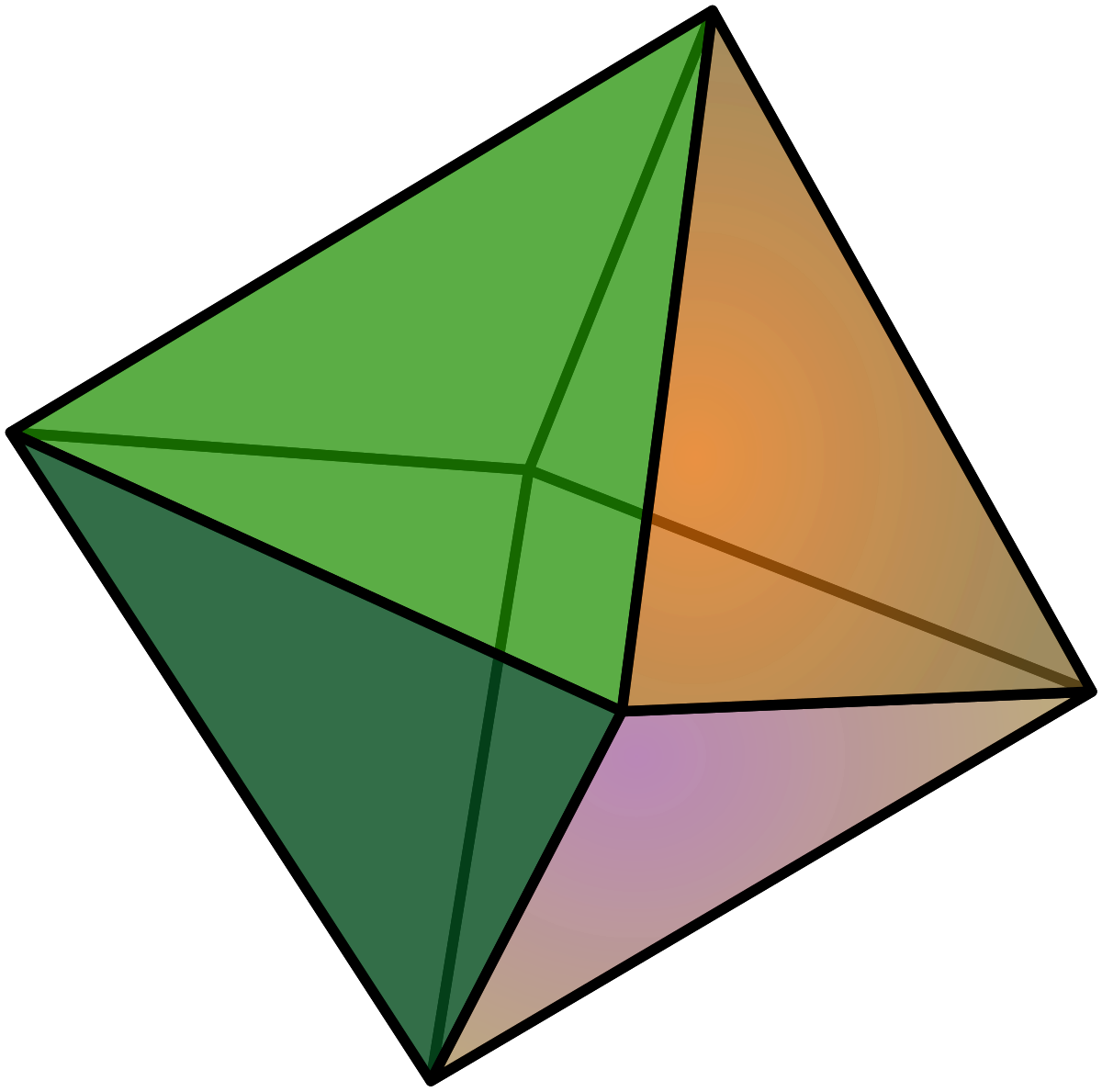
The third of the Platonic solids, the octahedron, has 8 triangular sides, 6 vertices and 12 edges and symbolizes the air element. The octahedron is connected to the heart chakra, the center of love and compassion. This chakra is where we access our aspects of healing and nutrition and where we find acceptance and forgiveness. The self-reflected form of the octahedron moves in a higher vibration of reflection, compassion and healing. In working with the octahedron, we become attuned to the more spiritual nature of ourselves and begin to understand our true nature.
Dodecahedron
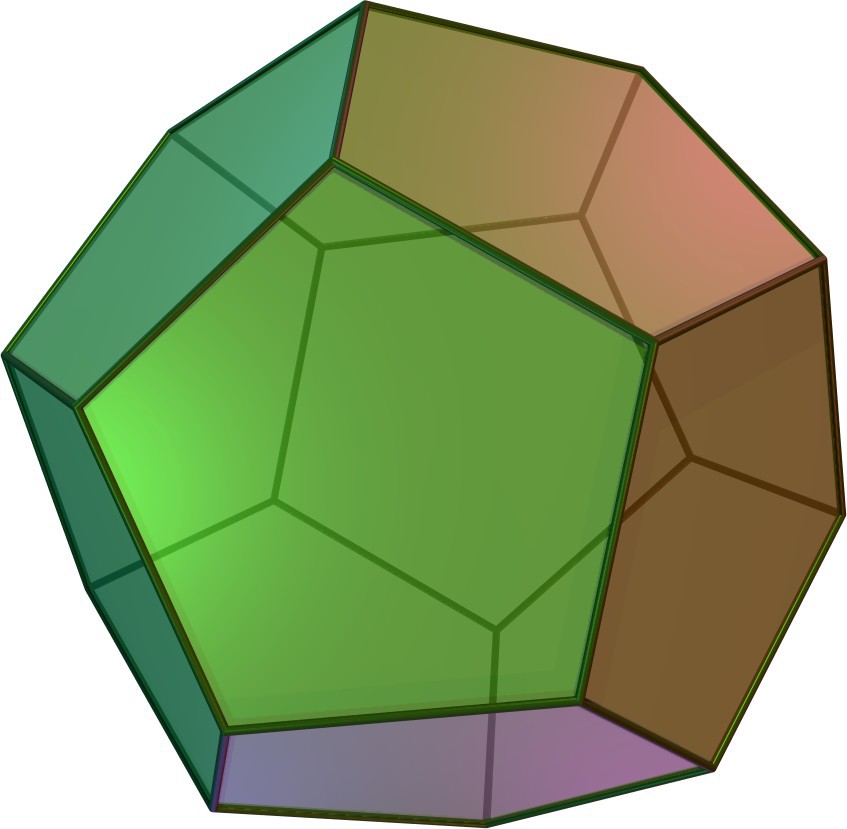
The dodecahedron has 20 faces, 12 vertices and 30 edges. Each face is shaped like a pentagon. The dodecahedron is connected to the Ethers/Universe and works through the upper chakras, such as the third eye chakra and the crown chakra. It is a perfect tool to be used in meditation, as the energy held within that sacred form can raise your vibration to facilitate connection with your Higher Self. The dodecahedron is an expression of life and consciousness, which allows us to go beyond the vibrations of the physical body and reconnect with the highest vibrations of our true nature.
Icosahedron
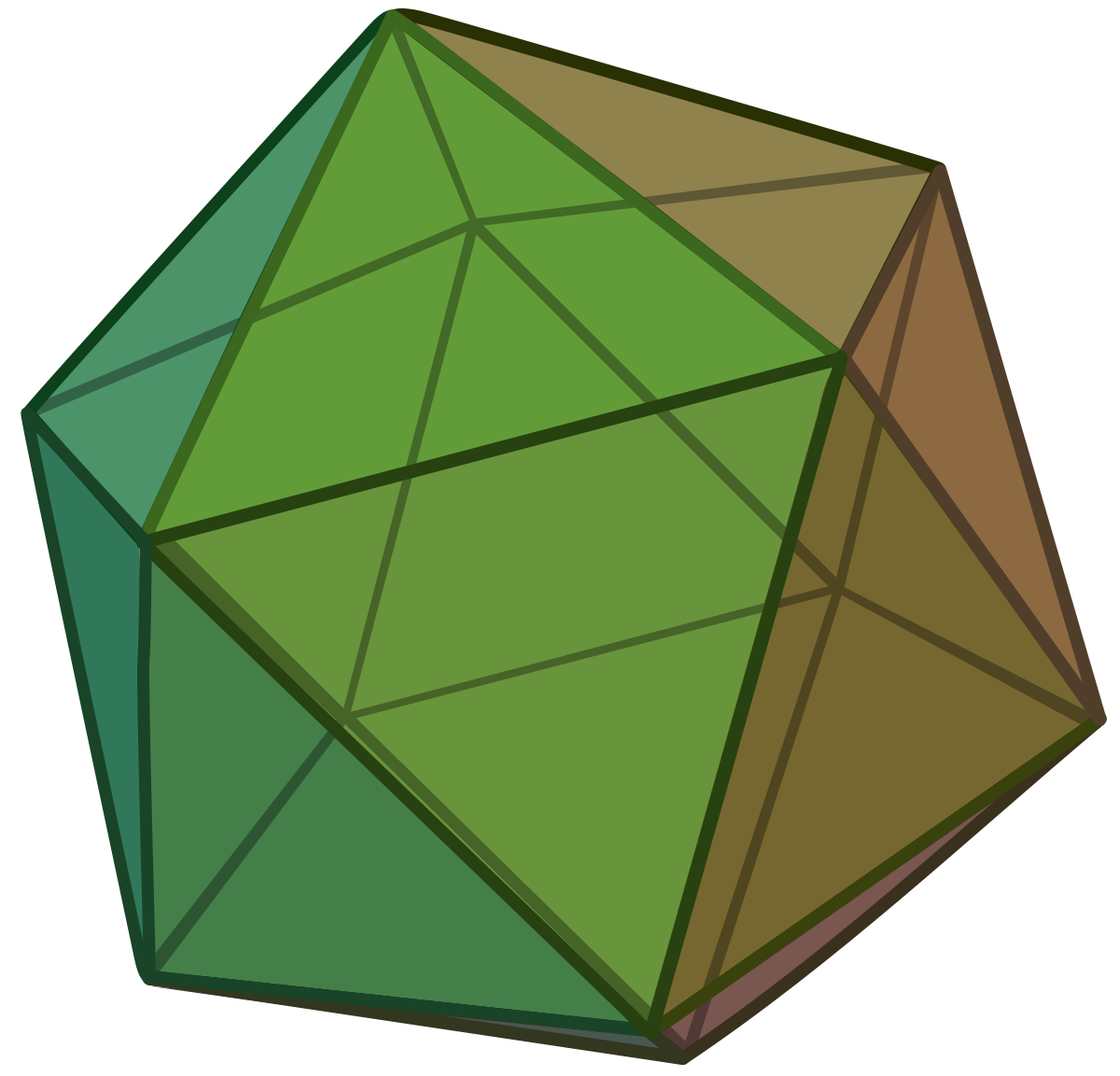
The icosahedron has 12 faces, 20 vertices and 30 edges. Each face is shaped like an equilateral triangle. The icosahedron is associated with the water element and corresponds to the crown chacka. Water symbolizes movement, flow and change. This form can help in improving the creative thinking process and in removing emotional blocks from creative energies. The icosahedron is a tool that teaches us to ?go with the flow?; allowing freedom of expression, creativity and positive changes to flow effortlessly through us.
